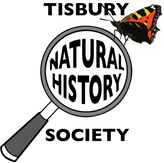|
Unfortunately, due to the stormy weather we need to cancel this event. We shall let you know if we are able to put it on at another time.
Peter Shallcross' page is now on the website, with handy tips of places where you might find certain butterflies and helpful information about their habitats and seasonal appearance. Go to the Butterflies section under the Resources menu, within Local Wildlife.
On Monday 25th March at 6pm, we will be screening Ed Scott-Clarke's documentary ‘E-Life’ at the New Vic (Victoria Hall) in Tisbury. Doors and bar open at 5.45 pm. All welcome...it's £1 per ticket for members and non-members. Free for the Under 21s.
Ed Scott-Clarke will be there to answer questions afterwards. E-Life investigates the social and environmental consequences of our electronic waste. Computers, mobile phones, TVs and home appliances have become an intrinsic part of our daily lives revolutionising the way we interact, communicate and view the world. Keeping up with the latest models and lifestyle products has firmly positioned consumers as the driving force behind a constant cycle of technological advancement. But what exactly happens to our broken computer when we throw it away? Where does that old phone go when we upgrade? From the US to the UK, Accra to Amsterdam, E-LIFE provides the answers. Mike Read is a wildlife photographer and he (and his wife) have spent many hours traversing the Somerset Levels recording the flora and fauna of this ancient land. For over 5,000 years, people have visited this area. Bordered by the sea at Bridgewater Bay, receiving the rain run-offs from the Mendips, Quantocks and Blackdown Hills, and being the flood plains of several low gradient rivers (the River Parrett, for example, declines by 11.5 inches over a stretch of 11 miles) the water levels are now more controlled than in ancient times and a variety of nature conservation organisations manage the land to support and encourage a wide and varied array of wildlife.
Having set out the parameters of the area, Mike introduced us to an ancient walkway, said to date from 3806 BCE precisely! This raised boardwalk was known to our ancestors as the Sweet Track and helped them to navigate their way through the reeds and vegetation, above the water while hunting and gathering their food and resources. Peat continues to be cut from the nutrient rich soils and reeds harvested for use in basket making and for thatch. Mike’s favourite product of the area is the apples used in cider making and having been drunk by everyone instead of the unclean water. Our talk started with a photograph of a telegraph pole with a curious carving of a bird on top. The bird was a dalmatian pelican. Remains of this species have been found preserved in the peat and so they must have lived there. We were treated to a selection of superb photographs of the Somerset Levels through the seasons, starting with spring and alder catkins, marsh marigold, lapwings, 6 species of heron, egrets, marsh harrier, peregrine, the heronry at Swale Wood (visited by several members last spring), the early nesting mistle thrush while it’s cousin, the song thrush, is still singing to attract a mate, and the first migrants, chiff chaff and blackcaps. Nestled down in the reeds, we saw images of bittern and then a series of shots of great crested grebe doing a cat display followed by a weed dance, all part of their courtship rituals. The number of curlews has increased since the nature bodies have had a say in the optimum level of the water. The first butterflies and dragonflies were photographed among the water lilies and iris while a hobby was captured with a dragonfly in its beak. In summer, the bees are swarming and the yellow and white flowers of spring are superseded by the darker, richer colours of great willowherb, purple loosestrife and tufted vetch. Swallows arrive and the great egret chicks fledge. Kingfisher, moorhens, mallards and others are hunted by buzzards and marsh harriers. Towards the end of the summer, apples ripen, ditches are cleared and migrants pass through including the whitethroat and osprey. Hops, hips, elderberries and blackberries glisten in the autumn sunshine and provide food for speckled wood and red admirals. Fungi appears including fairy ink caps and glistening ink caps. Flocks of lapwing grow in number day by day. Golden plover arrive from the northern UK and Iceland. Mike told us about the successful reintroduction programme of the common crane and how many pairs are now breeding on the levels and some pairs have moved away to South Wales. In winter, lapwings, golden plovers, black-tailed gobwits and cormorants can be seen and wetland fowl of all kinds will be displaying and wing flapping in order to attract a mate. During the winter months, it is the best time to see bearded tits, short-eared owls and barn owls and also the now world famous murmurations of starlings. All captured through Mike’s lens and accompanied by interesting and amusing anecdotes, we are eagerly anticipating our visit to the levels this summer. The society’s visit to Ham Wall is on Saturday June 8th, 2024. Emma Procter On the Field Trips page you can now access the document which shows the postcode location of the destination, distance, difficulty, footwear and picnic advice for each field trip.
We also indicate the times for meeting at the Nadder Centre, as we encourage members to share lifts, plus the start and estimated finish time at the location. We have limited numbers on only one field trip: on Bank Holiday Monday 6th May. 5.30 pm. Guided bird walk at Chicksgrove. If you would like to sign up for this one, do let us know on the Contact page. Our next meeting, at the Victoria Hall on Tisbury High Street on Thursday 14th March at 7:30pm (doors, and the bar will be open from 7:00) will hear from Mike Read who is going to share with us his view of ‘The land of the Somer people’.
Mike, who lives at Ringwood in Hampshire, has worked as a free-lance wildlife photographer for over 40 years. His pictures are often used as nature illustrations, including in books he has written or co-authored such as 'The Robin' & 'The Barn Owl' both published by Blandford Press and a number on aspects of the New Forest: 'New Forest Moods', 'Perfect New Forest', 'Spirit of the New Forest', 'Spirit of the New Forest Pony', and 'New Forest National Park' all published by Halsgrove Publishing and 'Red Kite Country' published by Wild Guides Ltd. The Land of the Somer People, is one of a number of talks Mike delivers to societies like ours, illustrated with pictures he has taken over the years. He will take us through a typical year on the Somerset Levels, a wonderful place to watch wildlife at any time of year. The Levels have changed greatly since Stone Age man first visited the area and laid bundles of hazel sticks to be able to cross the boggy ground. Over 5,000 years later, pollarded willows, pumping stations, drainage ditches or ‘rhynes’ and other man-made constructions, have created a very controlled landscape. But wildlife still thrives with birds, flowers and insects all enjoying the Levels’ landscapes and the nature reserves that have been established. In the spring and summer, flowers add colour to the place as do butterflies, dragonflies and damselflies. Birds include up to six species of the heron family, raptors such as marsh harriers, buzzards, peregrines and hobbies as well as huge flocks of wintering waders and wildfowl. There is the successful reintroduction of common cranes to the area and the marvellous spectacle of the weaving, ever-changing patterns of ‘murmurations’ as tens of thousands of starlings fly in to roost in the reedbeds at sunset, while hawks and harriers try to secure a final meal of the day. The People’s Trust for Endangered Species (PTES) is running a pilot programme to monitor hedgehog populations (NHMP). For this programme, a large number of cameras are deployed at specific sites across the country at specific dates, with 5 sites having been selected in Wiltshire this spring/summer. Volunteers are needed to help deploy the trail cameras at the site and check the images obtained. The Tisbury and District Natural History Society has its own independent trail camera project (more info here) but we would like to assist two neighbouring areas with their participation in the PTES pilot project.
If you would like to take part in the camera deployment aspect, take note of the dates and get in touch with us so we can coordinate our participation with the organisers of the sites. Broadchalke Deployment day Thursday 4th April Collection day Saturday 4th May Barford St Martin Deployment day Saturday 20th July /Sunday 21st July (TBC) Collection day Monday 19th August/ Tuesday 20th August (TBC) If you would like to help with image checking (identifying animals in the pictures taken by the trail cameras), please follow these instructions: 1. Register in the portal MammalWeb first. 2. Following registration in MammalWeb, please fill in this PTES form, using the same email address that your MammalWeb account is linked to. This will register you as a PTES NHMP volunteer, and you will receive instructions on how to take part. For image checking, you don’t need to wait until the camera season is over, as there are already images from 12 previous sites across the country. Inés López-Dóriga As the weather warms and the days lengthen so we begin to see more wildflowers in the country and along the roadside. After the spring equinox is referred to as the vernal period. Late winter before the equinox is referred to as prevernal. Classic prevernal flowers are those that bloom before trees and bushes come into leaf and throw shade over the plants. An example is the primrose which we will find blooming in woodlands and under hedges before the leaves break.
The primrose spreads its leaves in a rosette against the ground around the flowers. This allows it to maximise the light that they can absorb while the sun remains relatively low. This gives them a competitive head start, allows the flowers to be fertilised and set seed early in the year before other taller plants shade it out. At this time, its bright yellow flowers are hard to miss and are a welcome source of nectar for any early emerging insects. Later in the year the leaves become pallid and die back. Another flower providing nectar at this time of year is Coltsfoot. This plant looks like a small dandelion but in contrast to the primrose, it flowers before its leaves appear. Each composite flower is held on a short scaly stem; quite different to the dandelion’s smooth one and similar to sedum flower stems. As the flower’s centre is dense, it also looks like a large all-yellow daisy. It is a creeping perennial weed of rough ground and field edges and as it spreads by rhizomes underground if it gets into your garden, it can become a pest. The leaves emerge after the flowers have died back and are shaped like a heart or horse’s hoof, hence the name. Historically it was used as a remedy for coughs and colds. Andrew Graham |
Photo: Avocets (Izzy Fry)
The headers display photos taken by our members. Do get in touch via the Contact Form if you'd like to submit a photo for selection.
Archives
May 2024
Categories
All
|


 RSS Feed
RSS Feed